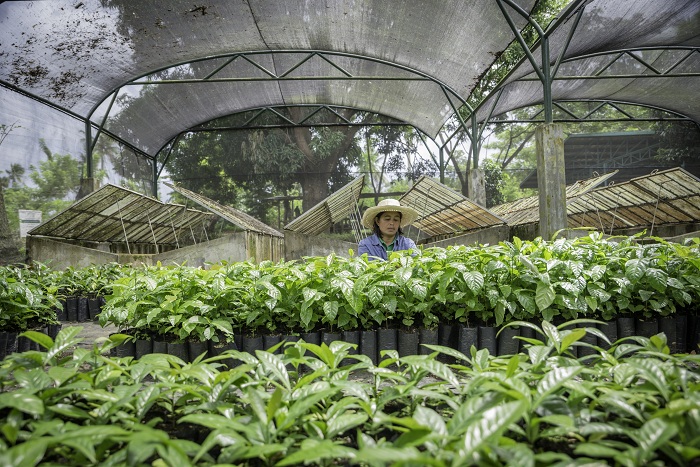I planted my first coffee tree back in 1999 in a farm lent to us by a religious order somewhere in Tagaytay. But sadly, that property was taken over by urbanization and my tree was part of the sale.
Then my next experiment was in Lucban, Quezon where we planted row upon row of Robusta not knowing that the typhoons will run smack into our coffee and citrus farm. All gone.
The next time around, we planted on three hectares in an “Adopt a Farm” site in Pangil, Amadeo, Cavite. We surrounded it with papaya, bananas, and we planted peanuts, too. As soon as the program ended, so did our coffee trees. We are still waiting for the “adopt a farm” to be revived, but when it does, maybe we will just plant “short-term” crops like vegetables, in case the owner yet again sells the property sooner than later.
 Enough of the failures. Let’s think positive.
Enough of the failures. Let’s think positive.
Coffee takes three to five years to fruit, except for some new clones that can fruit they say in less than two years. For the seedlings and planting materials I got exposed to, it has always taken longer. But it’s also a personal commitment to plant a crop whose fruit I also drink a lot of. Maybe one or two trees a year to support our habit? Imagine if every coffee drinker planted two trees a year?
After several failed attempts, we have learned a few lessons in farming.
This time that we are planting on our own land, we make sure that mistakes one, two, and three will not happen again. And since we also planted vegetables in many areas of the farm, we are able to eat fresh organic vegetables, pick fresh fruits like bananas and papayas, and admire the tall trees that we found on the property.
Around 20-25 people have already signed up for our Coffee Farming seminar. I will share with them my failures in coffee farming as well as our successes. My BARAKO co-advocate, Dr. Alejandro”Andy” Mojica, who co-wrote our 2005 tome BARAKO: the Big Bean will be guiding us through the whole exercise.

I have talked to some coffee enthusiasts who will start planting in Benguet. Our very own PCBI Director Joel Lumagbas is planting big time in Palawan, as well as many new farmers, mostly young ones who are planting coffee in Bohol, Cebu, and Bukidnon.
COFFEE BEANS OR COFFEE PLANTS?
Coffee farming is not for the faint of heart but it is so fulfilling to harvest from your own coffee tree. Though Cavite can plant only the three varieties namely Robusta, Excelsa and Liberica, these coffees can also be sowed to grow into seedlings and can be another business which is a coffee nursery.

The Philippine coffee industry may need millions of trees to address the increasing consumption of coffee and the first thing investors will need are seedlings. So there is money, too, in a coffee nursery business. Everyday we get inquiries on where to get good planting materials.
ORGANIC VEGETABLES
While waiting for your coffee to grow and eventually bear fruit, you can plant any of the following alongside coffee: bananas, papayas, peanuts. They are all companion plants of coffee.
For us, we also added leafy lettuce, arugula, and local vegetables like pechay and “Bahay Kubo” vegetables. That way, we have a variety of produce every time and pretty much have a balanced diet around different kinds of greens.

The added bonus is when we get the summer fruits: Indian mango, Duhat, and even pomelo and lanzones.
Want to try out farming? Get in touch with ECHOfarms or with Philippine Coffee Board Inc. We can also schedule “pick and pay” tours when the harvest is aplenty.
 The next Coffee Farm Seminar is on April 28 at the ECHO and Barako farms in Amadeo, Cavite. Call (02) 813-1028 or email admin.pcbi@gmail.com to reserve a seat.
The next Coffee Farm Seminar is on April 28 at the ECHO and Barako farms in Amadeo, Cavite. Call (02) 813-1028 or email admin.pcbi@gmail.com to reserve a seat.
